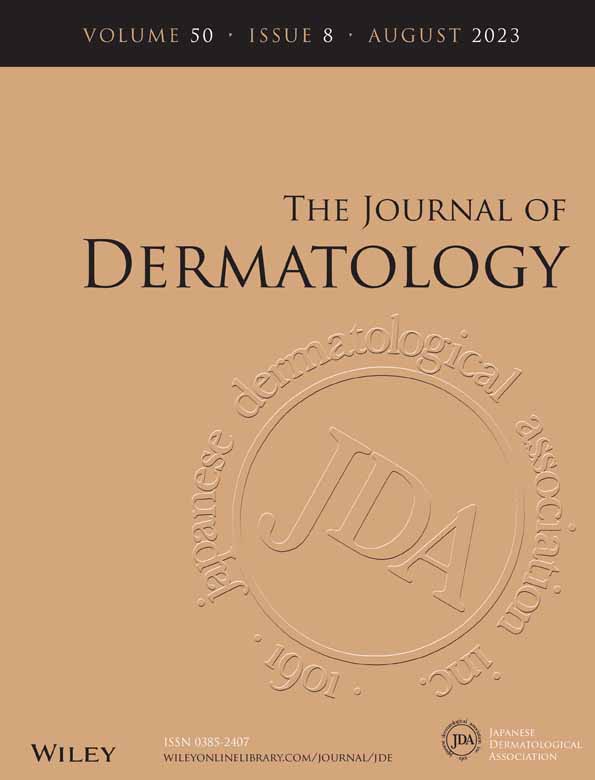Outcome of fosravuconazole treatment for onychomycosis refractory to topical antifungal agents
Abstract
Fosravuconazole L-lysine ethanolate (F-RVCZ) is an oral antifungal agent approved in Japan for the treatment of onychomycosis. We treated 36 patients (mean age 77.6 years) with onychomycosis that had been refractory to long-term topical treatment. The patients took F-RVCZ (100 mg ravuconazole) once daily for a mean of 11.3 weeks, and were followed up for an average of 48 weeks (mean 48.3 ± 2.1 weeks). The mean rate of improvement of the affected nail area at 48 weeks was 59.4%, and 12 patients achieved complete cure. Patients with total dystrophic onychomycosis (TDO) showed a significantly lower improvement rate than those with distal and lateral subungual onychomycosis (DLSO), and those with an affected nail area of 76%–100% at the first visit showed a significantly lower improvement rate than those with an affected nail area of 0%–75%. Six patients had adverse events necessitating treatment discontinuation, but the symptoms and laboratory data improved without specific treatment in all of them. The data suggest that F-RVCZ would be effective in various age groups, including the elderly, and even in patients with onychomycosis refractory to long-term topical antifungal treatment. It was also suggested that its early use in mild cases might achieve a higher rate of complete cure. Furthermore, the average cost of oral F-RVCZ therapy was lower than that for topical antifungal agents. Therefore, F-RVCZ is considered to be much more cost-effective than topical antifungal agents.
CONFLICT OF INTEREST STATEMENT
T. Inoue declares receiving consulting fees and speaker's fees from Kaken Pharmaceutical, Eisai, Sato Pharmaceutical; Y. Tsunemi declares receiving consulting fees and speaker's fees from Kaken Pharmaceutical, Eisai, Maruho, Sato Pharmaceutical, Janssen Pharmaceutical K.K., and Sun Pharma Japan Limited; H. Amano declares receiving consulting fees and speaker's fees from Kaken Pharmaceutical, and speaker's fees from Eisai, Sato Pharmaceutical.




